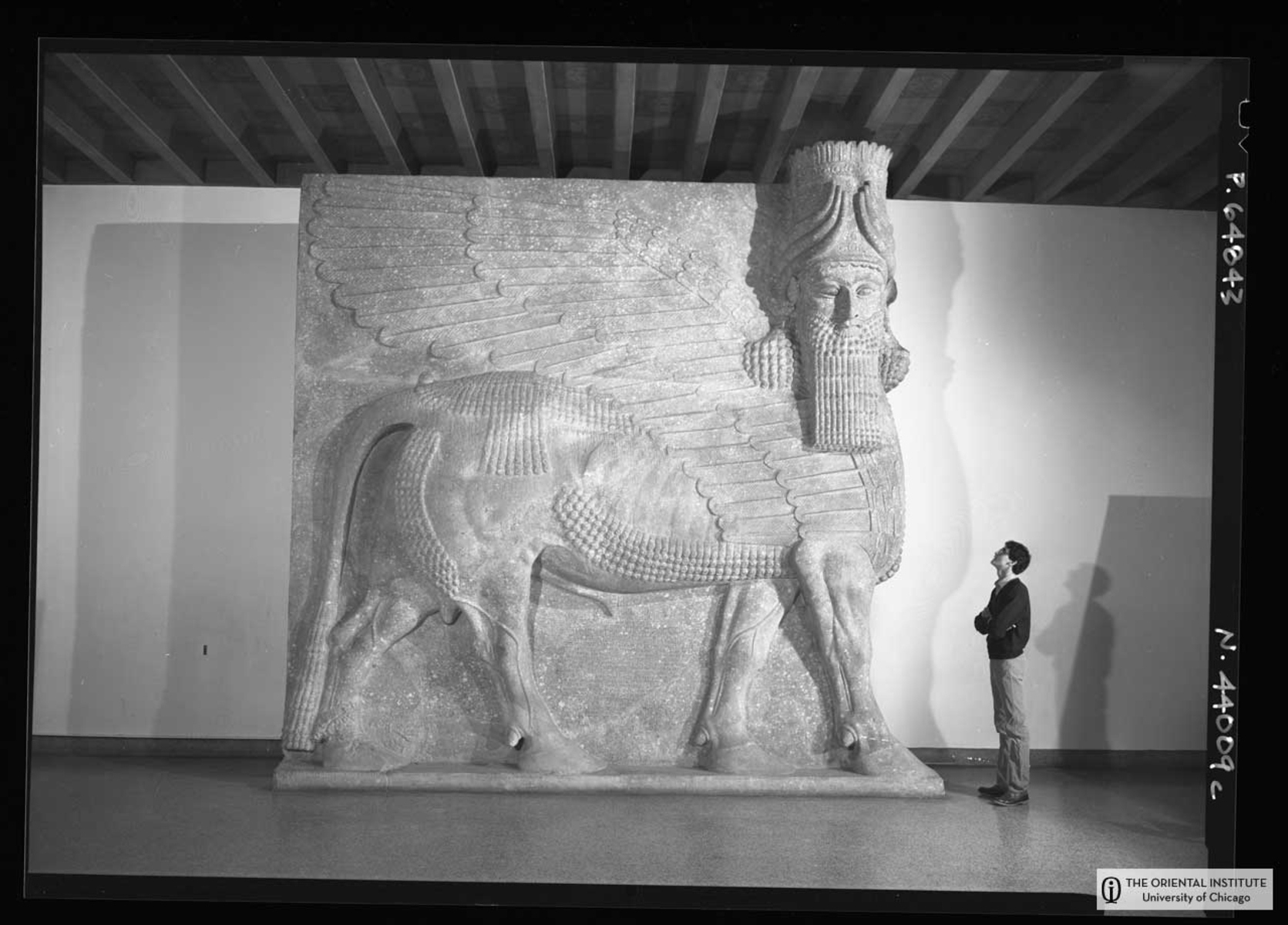Discovering the Lamassu: The Majestic Guardian of Assyrian Heritage
In 1929, an extraordinary discovery was made in northern Iraq, unveiling a remarkable artifact that would soon captivate the world: a winged-bull sculpture known as a lamassu. Unearthed by archaeologists from the Oriental Institute (OI) at Khorsabad (Dur-Sharrukin), this monumental piece once guarded the throne room of Sargon II, the powerful Assyrian king who ruled from 721 to 705 BC.

The Mythological Majesty of the Lamassu
The lamassu is more than just an impressive sculpture; it is a mythological hybrid figure designed to protect and ward off evil. Combining the head of a human, the body of a bull, and the wings of a bird, the lamassu represents a protective deity revered in ancient Mesopotamian culture. Its depiction in the “Epic of Gilgamesh” links it to a rich tradition of iconography.

Notably, the lamassu at the Oriental Institute features five legs, a design characteristic of those commissioned during Sargon II’s reign. This unique feature allows the sculpture to appear as if it is either standing or walking, depending on the viewer’s angle. Standing nearly five meters (16 feet) tall and weighing around 40 tons, the lamassu is both a physical and symbolic colossus.
From Excavation to Exhibition: A Monumental Move
Upon its discovery, the lamassu was carefully disassembled and packed into crates for transport. The massive sculpture’s journey to the United States was no less remarkable. It was brought to the Oriental Institute Museum in Chicago in 1930, through a specially constructed opening in the gallery wall.

Given its size and weight, the floor of the museum was reinforced to support its massive bulk, and the building was constructed around it to ensure its stability. As a result, this grand lamassu remains a permanent fixture in the museum, a testament to both ancient craftsmanship and modern preservation efforts.
A Legacy Preserved
Today, the lamassu at the Oriental Institute stands as a monumental reminder of the Assyrian Empire’s grandeur and the dedication of those who unearthed and preserved it. This guardian figure continues to captivate visitors, embodying the strength and mystique of a long-lost civilization.

